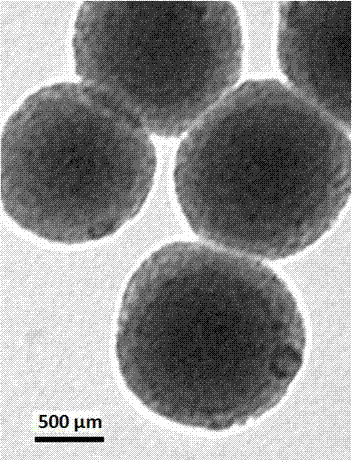Multiple composition for oral treatment
A technology for treating compositions and oral cavity, applied in medical science, dentistry, dental preparations, etc., can solve the problems of weak alkaline antibacterial performance, inability to take into account short-term and long-term synergy, and achieve the effect of reducing sensitivity
- Summary
- Abstract
- Description
- Claims
- Application Information
AI Technical Summary
Problems solved by technology
Method used
Image
Examples
Embodiment 1
[0050] Prepare a desensitizing toothpaste containing two components of bioglass-potassium dihydrogen phosphate. The thickness of the mesoporous structure layer of the bioglass surface layer is one-fifth of the particle radius. The components (mass percentage, %) of the toothpaste are listed as follows:
[0051] 15 % biological glass particles
[0052] 2% potassium dihydrogen phosphate
[0053] 30% friction agent - silica ball particles
[0054] 3% Thickener—Carboxymethyl Cellulose
[0055] 20% Humectant—Polyethylene Glycol
[0056] 2% Blowing Agent—Sodium Lauryl Sulfate
[0057] 0.3% flavor enhancer - peppermint flavor
[0058] 0.1% Preservative - Potassium Sorbate
[0059] The rest is water;
[0060] Wherein, the mass percentage of each component in the bioglass is:
[0061] CaO 28%
[0062] SiO 2 38%
[0063] P 2 o 5 2%
[0064] B 2 o 3 12%
[0065] CuO 0.5%
[0066] ZnO 0.3%
[0067] K 2 O 16%
[0068] Na 2 O 3.2%;
[0069] Among them, the particle ...
Embodiment 2
[0076] Prepare desensitizing chewing gum containing two components of bioglass-potassium hydrogen phosphate, the thickness of the mesoporous structure layer on the surface layer of bioglass is a quarter of the particle radius, and the components (mass percentage, %) of the chewing gum are listed as follows:
[0077] 20% bioglass granules
[0078] 2.5% potassium phosphate
[0079] 15% friction agent - silicon oxide particles
[0080] 8% Thickener—Carboxymethyl Cellulose
[0081] 5% Humectant—Polyethylene Glycol
[0082] 1% blowing agent - sodium lauryl sulfate
[0083] 1% flavor enhancer - glucose
[0084] 0.1% Preservative - Potassium Sorbate
[0085] 25% Gum Base - Styrene Butadiene Rubber
[0086] 3% softener - beeswax
[0087] The rest is water;
[0088] Wherein, the mass percentage of each component in the bioglass is:
[0089] CaO 26%
[0090] SiO 2 40%
[0091] P 2 o 5 2%
[0092] B 2 o 3 16%
[0093] CuO 0.4%
[0094] ZnO 0.4%
[0095] K 2 O 12.2...
Embodiment 3
[0103]Prepare a desensitizing dental adhesive containing two components of bioglass-potassium phosphate, the thickness of the mesoporous structure layer of the surface layer of bioglass is a quarter of the particle radius, and the components (mass percentage, %) of the composition are listed as follows :
[0104] 25% biological glass particles
[0105] 2% potassium dihydrogen phosphate
[0106] 10% friction agent - silica ball particles
[0107] 5% Thickener—Carboxymethyl Cellulose
[0108] 18% Humectant - Polyethylene Glycol
[0109] 0.5% blowing agent - sodium lauryl sulfate
[0110] 0.5% flavor enhancer - peppermint flavor
[0111] 0.1% Preservative - Potassium Sorbate
[0112] The rest is water;
[0113] Wherein, the mass percent composition of each component in the bioglass is:
[0114] CaO 30%
[0115] SiO 2 36%
[0116] P 2 o 5 4%
[0117] B 2 o 3 16%
[0118] CuO 0.2%
[0119] ZnO 0.6%
[0120] K 2 O 10%
[0121] Na 2 O 3.2%;
[0122] Among th...
PUM
| Property | Measurement | Unit |
|---|---|---|
| Graininess | aaaaa | aaaaa |
| Mesopore diameter | aaaaa | aaaaa |
Abstract
Description
Claims
Application Information
 Login to View More
Login to View More - R&D
- Intellectual Property
- Life Sciences
- Materials
- Tech Scout
- Unparalleled Data Quality
- Higher Quality Content
- 60% Fewer Hallucinations
Browse by: Latest US Patents, China's latest patents, Technical Efficacy Thesaurus, Application Domain, Technology Topic, Popular Technical Reports.
© 2025 PatSnap. All rights reserved.Legal|Privacy policy|Modern Slavery Act Transparency Statement|Sitemap|About US| Contact US: help@patsnap.com

